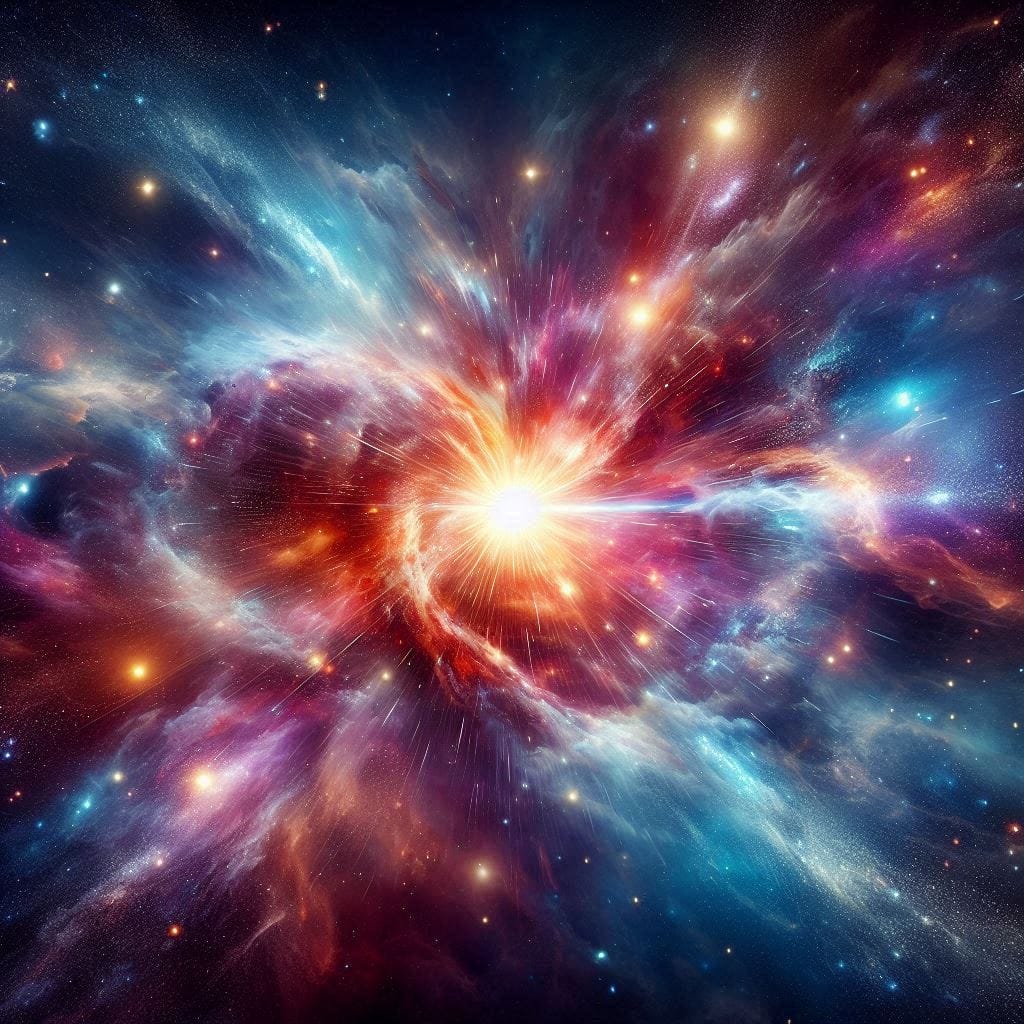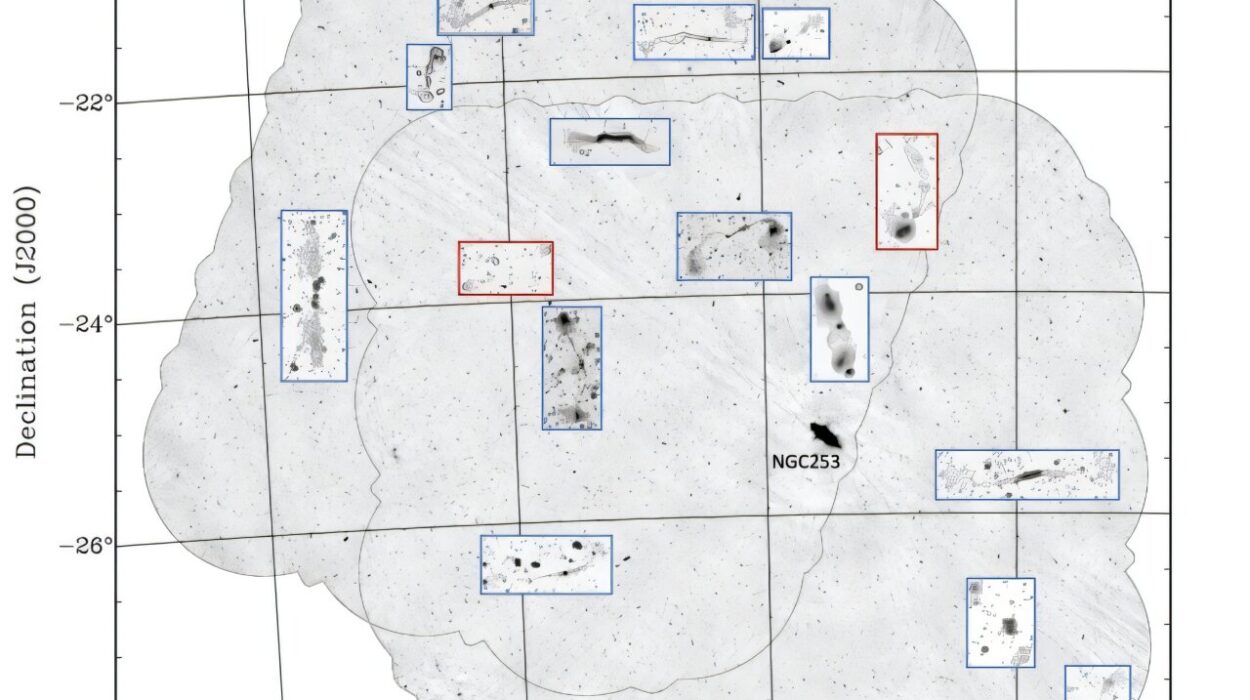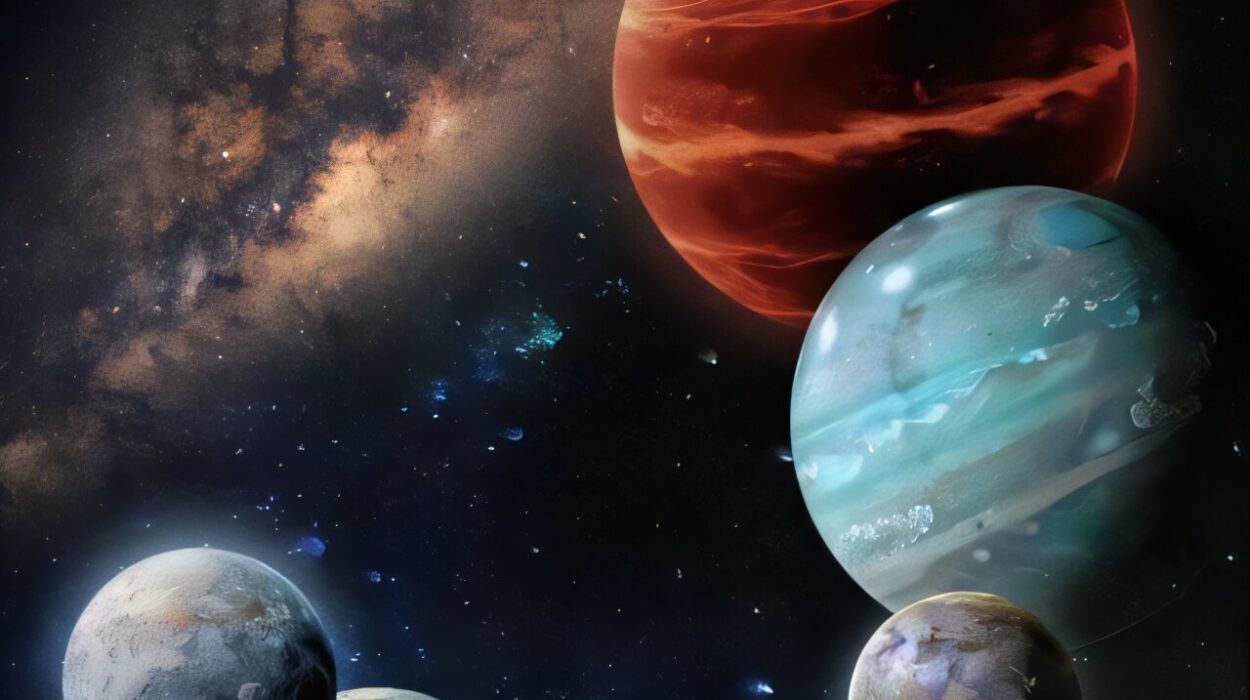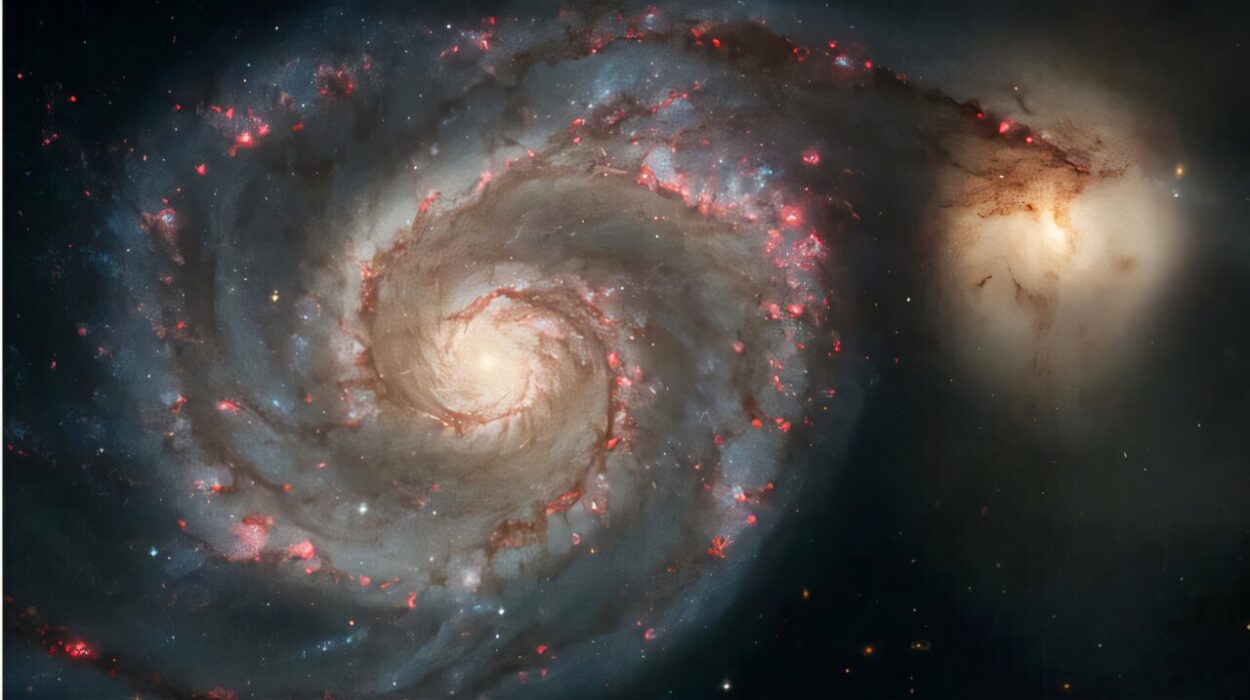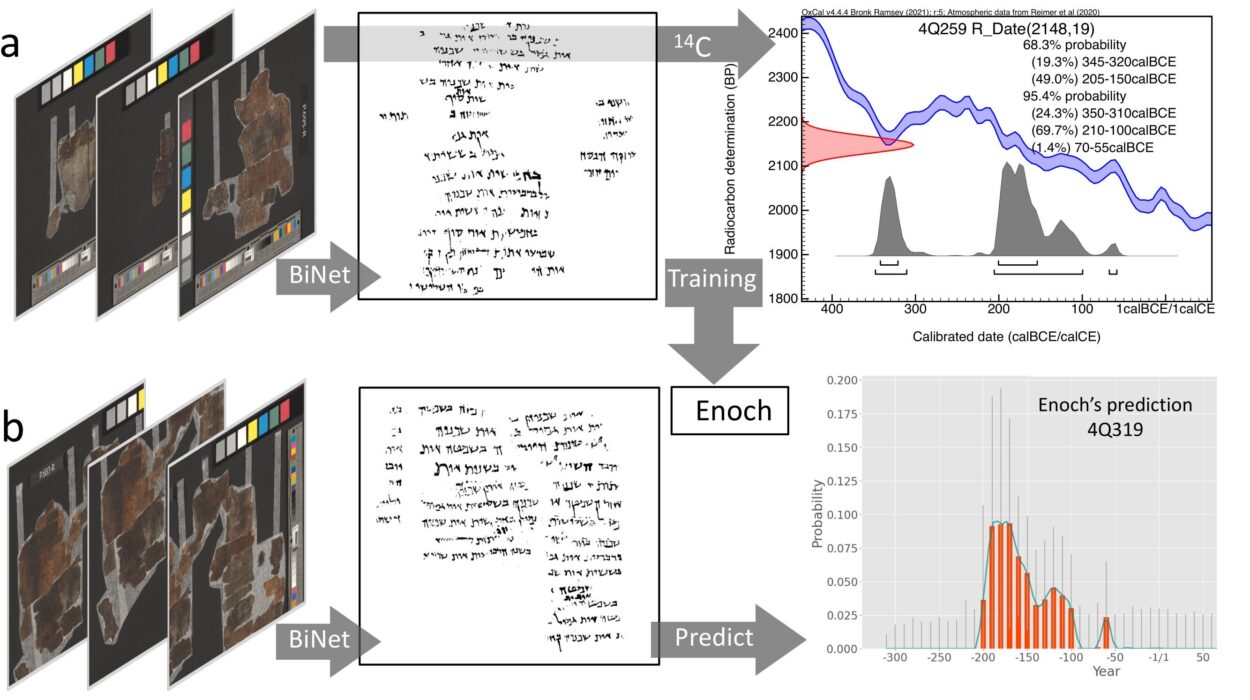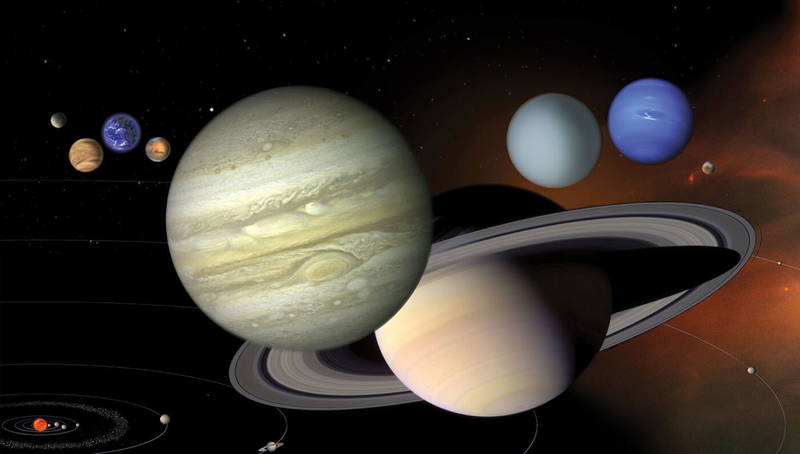Before time had a name, before light could shine, before space itself could stretch or curve, there was nothing—no stars, no galaxies, not even a void. Just an absence so profound that the very word “nothing” seems inadequate. Then, in a fraction of a moment too brief for human intuition to grasp, everything changed.
The Big Bang wasn’t an explosion in space. It was the sudden emergence of space itself. It wasn’t the shattering of a quiet silence by a noise, but rather the birth of all noise and silence together. In that unfathomable instant—about 13.8 billion years ago—the universe blinked into being, and with it, the seeds of everything that ever was or ever will be.
To understand what really happened at the Big Bang is not just to understand physics. It is to confront the limits of reason, the edges of reality, and the mystery at the core of existence.
Before the Bang?
Perhaps the most haunting question isn’t what happened at the Big Bang, but what happened before it. It’s a question that seems so obvious, yet physics tells us it may be meaningless.
Time, as we know it, didn’t exist before the Big Bang. General relativity, Einstein’s masterwork, describes time and space as a single, woven fabric—spacetime—that is shaped by matter and energy. But if the Big Bang was the moment this fabric came into existence, then there was no “before” in any conventional sense.
Asking what came before the Big Bang is like asking what’s north of the North Pole. It assumes a direction that may not exist. According to current models, time itself began at the Big Bang. Causality—the idea that one thing happens because of another—may not apply to the birth of time.
Yet, our minds resist this. Surely something caused the Big Bang? Surely there was something before?
Quantum gravity theorists and cosmologists have proposed various models—cyclic universes, quantum bounces, or eternal inflation—that suggest the Big Bang might be just one frame in a much grander cosmic movie. But these are theories in search of evidence. For now, our story begins at time zero.
The First Fraction of a Second
At 10⁻⁴³ seconds after the Big Bang, we reach what physicists call the Planck time—the smallest meaningful slice of time. Before this instant, our current laws of physics break down. Quantum mechanics and general relativity both apply, yet they contradict each other under these conditions. We lack a complete theory of quantum gravity to resolve the paradox.
But at Planck time, something extraordinary begins.
The universe was unimaginably hot—over 10³² Kelvin—and densely packed into an infinitesimal point. In this firestorm of creation, all four fundamental forces—gravity, electromagnetism, and the strong and weak nuclear forces—were unified, indistinguishable from one another. This was the era of the Grand Unified Theory, though the theory itself remains incomplete.
The energy density was so high that particles and antiparticles spontaneously popped in and out of existence. Time was ticking, but barely. Space was expanding, but violently. Reality was not yet stable. The laws of physics were still crystallizing from the chaos.
Then something astonishing happened—inflation.
The Great Cosmic Inflation
Around 10⁻³⁵ seconds after the Big Bang, the universe underwent an exponential growth spurt. This event—cosmic inflation—caused space to expand faster than the speed of light. In less than a trillionth of a second, the universe ballooned from subatomic size to something perhaps the size of a grapefruit, or even larger.
This sounds like science fiction, but the evidence is compelling. Inflation explains why the universe appears flat, why it looks the same in every direction, and why tiny fluctuations in the early cosmos later formed galaxies.
Inflation wasn’t an explosion of stuff into space—it was the stretching of space itself. And as it stretched, tiny quantum fluctuations were magnified, creating the seeds of all cosmic structure. Every galaxy, star, and planet—including Earth—owes its existence to those quantum ripples, frozen in the fire of the early universe.
When inflation ended, the energy driving it was released into space, heating it up and flooding it with particles. This was the true beginning of the Hot Big Bang.
The Universe Lights Up
For the next few microseconds, the universe was a churning soup of fundamental particles—quarks, electrons, neutrinos, photons. Temperatures exceeded 10¹² Kelvin. The strong force began to glue quarks together into protons and neutrons, the building blocks of atomic nuclei.
By the time the universe was a few seconds old, it had cooled enough for nuclear reactions to occur. This era is known as primordial nucleosynthesis. In just minutes, most of the helium, deuterium, and trace elements in the universe were formed. The heavier elements—carbon, oxygen, iron—would have to wait billions of years for stars to be born and die.
But for now, the universe was still dark. Photons, the particles of light, couldn’t travel far without slamming into free electrons. The universe was opaque, like the surface of the sun.
It wasn’t until about 380,000 years later that electrons and nuclei finally combined to form neutral atoms. With fewer free electrons around, light could travel freely. The universe became transparent. This moment, known as recombination, left behind a ghostly echo: the cosmic microwave background radiation.
We can still detect that radiation today. It’s a faint afterglow of the Big Bang, a kind of baby photo of the cosmos, stretched and cooled over billions of years. It is one of the most powerful pieces of evidence we have that the Big Bang really happened.
From Chaos to Cosmos
Once light could move freely, gravity began its slow, relentless work. Over hundreds of millions of years, tiny clumps of matter began to attract more matter. Gas collected into dense clouds, which collapsed into the first stars.
These first stars were giants—short-lived, blazing, and unstable. They forged the first heavy elements in their cores, and when they died in violent supernovae, they scattered those elements into space, seeding the next generation of stars and galaxies.
This was the beginning of cosmic structure. Galaxies swirled together. Clusters formed. Supermassive black holes grew. The great web of the universe—the vast cosmic network of matter stretching across billions of light-years—took shape.
Some 9 billion years after the Big Bang, on the outskirts of a modest spiral galaxy, a small planet formed around a yellow star.
Life began to stir.
What the Big Bang Was Not
To truly understand the Big Bang, we must also correct the myths.
It was not a point in space that exploded into emptiness. The Big Bang happened everywhere, all at once. Space itself expanded. There was no outside into which it expanded—space itself was created in the process.
It also wasn’t the origin of every law of nature. Some physicists believe the laws may have emerged from deeper, eternal truths—or even from a multiverse of possible laws, most of which cannot support life or structure.
And despite the name, the Big Bang was silent. There was no medium like air to carry sound. The birth of the universe was not loud. It was vast, hot, and silent.
The name “Big Bang” was actually coined by a skeptic, Fred Hoyle, who favored a different theory. Ironically, the name stuck—and now stands as one of the most famous in science.
The Future of the Universe
The Big Bang was the beginning, but not the end of cosmic evolution. The universe continues to expand. In fact, the expansion is speeding up, driven by a mysterious force we call dark energy.
We don’t yet know what dark energy is. It appears to make up about 68% of the total energy in the universe. But it’s invisible and doesn’t behave like anything else we know.
If current trends continue, the universe will keep expanding forever, growing colder and darker as galaxies drift apart and stars burn out. In the far future, all that may remain is black holes and empty space.
But theories differ. Some suggest a Big Crunch, where the universe eventually contracts and collapses. Others propose a Big Rip, where space tears itself apart. There’s even the idea of a Big Bounce—a cycle of universes, each born from the death of the last.
Whatever the outcome, we are living in a golden age of cosmic understanding. Never before has humanity seen so far, measured so precisely, or imagined so profoundly.
Cosmic Clues and Deep Mysteries
Though the Big Bang theory explains much, questions remain.
What exactly triggered inflation? What is dark matter, the invisible mass that tugs on galaxies but doesn’t interact with light? Is there a multiverse—other universes with different laws of physics?
And what about the deepest question of all: Why is there something rather than nothing?
Some theories appeal to quantum mechanics—perhaps the universe is a fluctuation in the quantum vacuum. Others invoke mathematical necessity or anthropic reasoning—that only certain universes can support observers like us.
But even these don’t feel like answers, not really. They simply push the mystery back a step.
In this sense, the Big Bang is not a final explanation. It is a gateway. It shows us that the universe had a beginning—but not necessarily why.
The Human Connection
Perhaps the most remarkable thing about the Big Bang is that we can know about it at all.
From a tiny planet, orbiting a single star in a single galaxy, a species of curious primates evolved the intelligence to detect ancient light, to measure the stretching of space, to model the birth of time itself.
We have peered across billions of light-years, seen galaxies as they were billions of years ago, and traced their origins back to a moment when space and time themselves began.
The atoms in our bodies were forged in stars that burned their lives into ash. The calcium in our bones, the iron in our blood, the oxygen in our breath—all were born in furnaces that exploded long before Earth existed.
We are not merely in the universe. We are of it.
The Big Bang isn’t just a scientific theory. It is our origin story. And like all great stories, it is full of wonder, conflict, mystery, and beauty.
The Expanding Horizon
New telescopes like the James Webb Space Telescope—and future missions that will follow—promise to look even deeper into the early universe. We may soon see the very first galaxies forming. We may detect gravitational waves from inflation itself. We may even find signatures of other universes—or the fingerprints of quantum gravity.
Every answer we uncover leads to new questions.
In the beginning, there was a fire without light. Then came light without form. Then form without life. Then life without mind. And finally, a mind that could look back and ask: Where did it all come from?
This is what happened at the Big Bang.
Or at least, what we think happened.
The rest of the story is still unfolding—in the stars, in the void, and in the minds that dare to imagine it.
